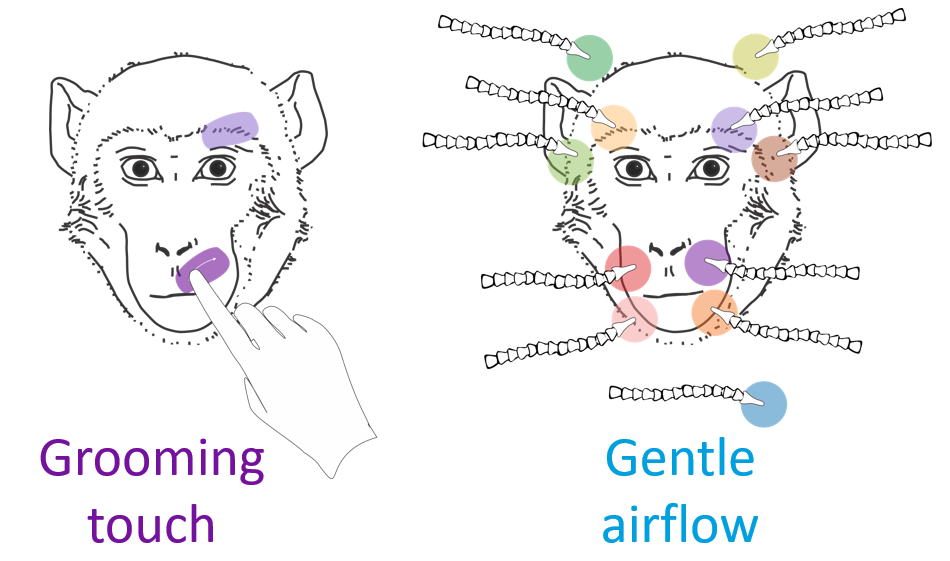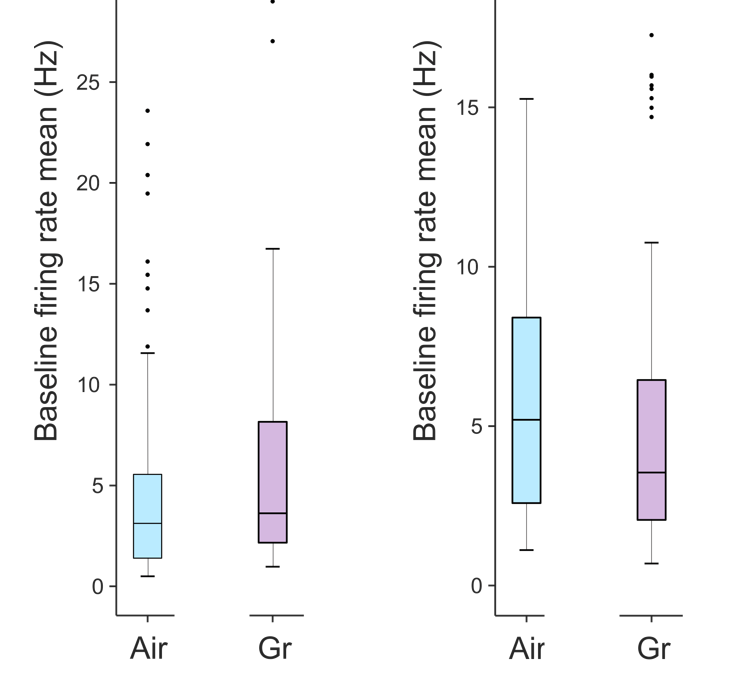Project Details
During alternating blocks of nonsocial and social tactile stimuli, neural activity was recorded from the amygdala and somatosensory cortex. As shown in the figure below, social stimuli consisted of grooming-like finger sweeps delivered by a trust human to the monkey’s face. For non-social stimuli, gentle air puffs were delivered to multiple regions of the face.
Our monkeys respond similarly to their human groomer as they would a fellow monkey providing grooming; relaxing and often falling asleep, relinquishing attention and vigilance to their partner. This was also seen in a decrease in heart rate, and when monkeys had sufficient experience with the blocks of grooming and air puffs, their heart rate changed in anticipation of the next block.

Neural responses recorded during this experiment included low-frequency and high-amplitude activity in cortical local field potentials which correlated with relaxation during grooming. Neurons in the somatosensory cortex responded as expected to social and non-social stimuli.
Consistent with previous studies, about 30% of amygdala neurons responded to non-social tactile stimuli. However, neural responses to the social stimuli presented a conundrum; less than 10% of cells from the amygdala responded to social touch. Upon closer inspection, we discovered that baseline firing rates are modulated by the presence of the groomer, the social partner in this context, with almost 25% of neurons showing significant changes.

An example baseline firing rate of a neuron with grooming (purple) and air puffs (blue).

Example baseline firing rate changes. On the left moving from grooming block to air puff block, right moving from air puff block to grooming block.